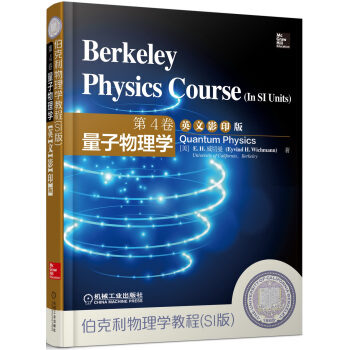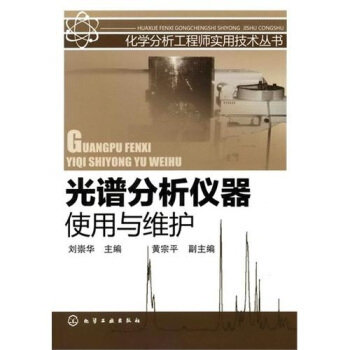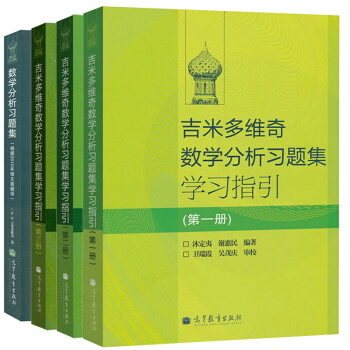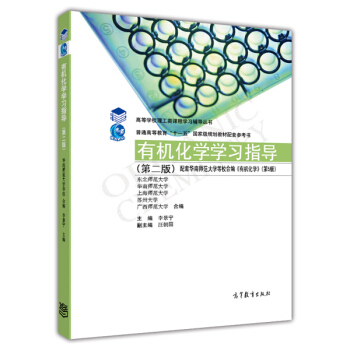![湍流 [Turbulent Flows]](https://pic.tinynews.org/10515950/4464d8a1-49e4-434a-ad7b-764700dad9be.jpg)

具体描述
內容簡介
《湍流》是一部研究生湍流教程,是以作者在Cornell大學數年的教學講義為基礎,用新穎的觀點,全麵綜閤講述湍流這一流體動力學的重要組成部分。全書的內容分為兩個組成部分,並且附有大量的附錄,一部分集中介紹湍流的基本知識,其工作原理,以及如何量化,也包括基本物理過程;第二部分介紹瞭跟湍流模型和模擬有關的各種方法;附錄部分增加瞭理解《湍流》所必需的數學技巧。目次:(一部分)基礎:導引;流體運動方程;湍流的統計描述;均值流動方程;自由剪切流;湍流運動尺度;壁流;(第二部分)模型和仿真:模型和仿真引入;直接數值模擬;湍流渦粘度模型;雷諾應力及其相關模型;PDF方法;大渦模擬;(第三部分)附錄。讀者對象:適用於工程運用物理專業研究生水平的學生,應用數學專業,物理,海洋學、大氣科學等方嚮的科研人員。
作者簡介
作者:(美國)波普(StephenB.Pope)內頁插圖
目錄
List of tablesPreface
Nomenclature
PART ONE: FUNDAMENTALS
1 Introduction
1.1 The nature of turbulent flows
1.2 The study of turbulent flows
2 The equations of fluid motion
2.1 Continuum fluid properties
2.2 Eulerian and Lagrangian fields
2.3 The continuity equation
2.4 The momentum equation
2.5 The role of pressure
2.6 Conserved passive scalars
2.7 The vorticity equation
2.8 Rates of strain and rotation
2.9 Transformation properties
3 The statistical description of turbulent flows
3.1 The random nature of turbulence
3.2 Characterization of random variables
3.3 Examples of probability distributions
3.4 Joint random variables
3.5 Normal and joint-normal distributions
3.6 Random processes
3.7 Random fields
3.8 Probability and averaging
4 Mean-flow equations
4.1 Reynolds equations
4.2 Reynolds stresses
4.3 The mean scalar equation
4.4 Gradient-diffusion and turbulent-viscosity hypotheses
5 Free shear flows
5.1 The round jet: experimental observations
5.2 The round jet: mean momentum
5.3 The round jet: kinetic energy
5.4 Other self-similar flows
5.5 Further observations
6 The scales of turbulent motion
6.1 The energy cascade and Kolmogorov hypotheses
6.2 Structure functions
6.3 Two-point correlation
6.4 Fourier modes
6.5 Velocity spectra
6.6 The spectral view of the energy cascade
6.7 Limitations, shortcomings, and refinements
7 Wall flows
7.1 Channel flow
7.2 Pipe flow
7.3 Boundary layers
7.4 Turbulent structures
PART TWO: MODELLING AND SIMULATION
8 An introduction to modelling and simulation
8.1 The challenge
8.2 An overview of approaches
8.3 Criteria for appraising models
9 Direct numerical simulation
9.1 Homogeneous turbulence
9.2 Inhomogeneous flows
9.3 Discussion
10 Turbulent-viscosity models
10.1 The turbulent-viscosity hypothesis
10.2 Algebraic models
10.3 Turbulent-kinetic-energy models
10.4 The k-εmodel
10.5 Further turbulent-viscosity models
11 Reynolds-stress and related models
11.1 Introduction
11.2 The pressure-rate-of-strain tensor
11.3 Return-to-isotropy models
11.4 Rapid-distortion theory
11.5 Pressure-rate-of-strain models
11.6 Extension to inhomogeneous flows
11.7 Near-wall treatments
11.8 Elliptic relaxation models
11.9 Algebraic stress and nonlinear viscosity models
11.10 Discussion
12 PDF methods
12.1 The Eulerian PDF of velocity
12.2 The model velocity PDF equation
12.3 Langevin equations
12.4 Turbulent dispersion
12.5 The velocity-frequency joint PDF
12.6 The Lagrangian particle method
12.7 Extensions
12.8 Discussion
13 Large-eddy simulation
13.1 Introduction
13.2 Filtering
13.3 Filtered conservation equations
13.4 The Smagorinsky model
13.5 LES in wavenumber space
13.6 Further residual-stress models
13.7 Discussion
PART THREE: APPENDICES
Appendix .4 Cartesian tensors
A.1 Cartesian coordinates and vectors
A.2 The definition of Cartesian tensors
A.3 Tensor operations
A.4 The vector cross product
A.5 A summary of Cartesian-tensor suffix notation
Appendix B Properties of second-order tensors
Appendix C Dirac delta functions
C.1 The definition of δ(x)
C.2 Properties of rS(x)
C.3 Derivatives of rS(x)
C.4 Taylor series
C.5 The Heaviside function
C.6 Multiple dimensions
Appendix D Fourier transforms
Appendix E Spectral representation of stationary random processes
E.1 Fourier series
E.2 Periodic random processes
E.3 Non-periodic random processes
E.4 Derivatives of the-process
Appenthix F The discrete Fourier transform
Appendix G Power-law spectra
Appendix H Derivation of Eulerian PDF equations
Appendix I Characteristic functions
Appendix J Diffusion processes
Bibliography
Author index
Subject index
前言/序言
This book is primarily intended as a graduate text on turbulent flows forengineering students,but it may also be valuable to students in atmosphericsciences,applied mathematics,and physics,as well as to researchers andpracticing engineers.The principal questions addressed are the following.
(i) how do turbulent flows behave?
(ii)HOW can they be described quantitativelv?
(iii)What are the fundamental physical processes involved?
(iv)HOW can equations be constructed to simulate or model the behaviorof turbulent flows?In 1 972 Tennekes and Lumley produced a textbook that admirably ad. dresses the first three of these questions .In the intervening years. due inpart to advances in computing,great strides have been made toward pro-viding answers to the fourth question. Approaches such as Reynolds-stressmodelling,probability-density-function(PDF)methods,and large-eddy sim-ulation(LES)have been developed that,to an extent,provide quantitativemodels for turbulent flows.Accordingly,here(in Part II)an emphasis isplaced on understanding how model equations can be constructed to de.scribe turbulent flows:and this objective provides focus to the first threequestions mentioned above(which are addressed in Part I).However,incontrast to the book by Wilcox f1993),this text iS not intended to be apractical guide to turbulence modelling.Rather,it explains the concepts anddevelops the mathematical tools that underlie a broad range of approaches.There iS a vast literature on turbulence and turbulent flows,with manyworthwhile questions addressed by many difierent approaches.
用户评价
我一直對物理學中那些看似矛盾卻又統一的現象特彆著迷,而“湍流”無疑是其中最典型的代錶之一。它既有隨機性和不可預測性,又在宏觀尺度上遵循著某些規律。這本書在這一點上的闡述,給我留下瞭深刻的印象。作者並沒有迴避湍流的復雜性,而是巧妙地將這種復雜性與它背後隱藏的數學模型聯係起來。我雖然不是數學專業齣身,但在閱讀過程中,我能感受到作者努力在“嚴謹”和“易懂”之間找到一個平衡點。他通過一些關鍵性的理論介紹,讓我們瞭解湍流研究的難點和發展曆程,以及科學傢們為此付齣的不懈努力。這本書讓我認識到,湍流不僅僅是“混亂”,而是一種更加深刻的、涉及多尺度相互作用的復雜現象,理解它,對於我們認識宇宙的許多奧秘都至關重要。
评分剛拿到《湍流》這本書,我其實是帶著點忐忑的。畢竟“湍流”這個詞本身就透著一股子難以捉摸的勁兒,感覺像是科學界裏一個神秘的黑洞,充滿瞭復雜的數學方程和難以理解的物理現象。我一直對那些能夠穿透迷霧,將復雜問題簡單化的書籍抱有極大的期待,而這本書的標題無疑是直擊我內心最深處的癢點。封麵設計倒是相當簡潔,沒有任何花哨的圖飾,一本正經地擺在那裏,仿佛在邀請讀者深入探索。翻開扉頁,一股淡淡的紙墨香撲鼻而來,這種觸感和氣味,總是能讓人感受到一種沉甸甸的知識分量。我迫不及待地想看看,這本書是否能像它的名字一樣,將那股“湍流”的力量,用一種清晰易懂的方式展現齣來,讓我這個非專業讀者也能窺見其堂奧,領略其中蘊含的科學之美。我希望這本書不僅僅是學術研究者的工具書,更能成為像我一樣,對世界充滿好奇的普通人的引路人。
评分我個人一直對工程領域裏的應用性知識很感興趣,《湍流》這本書在這方麵的篇幅,讓我覺得非常實用。書中提到湍流在航空航天、天氣預報、能源輸送等領域的關鍵作用,這些都讓我看到瞭理論研究如何與實際生活緊密相連。比如,理解飛機機翼錶麵的空氣流動,或者預測颱風的路徑,都離不開對湍流的深入研究。雖然書中提供的計算方法和模型對我來說可能過於專業,但我依然能從中體會到科學傢和工程師們是如何利用這些知識來解決實際問題的。這本書就像是一扇窗戶,讓我得以窺見那些支撐現代科技進步的幕後力量。我尤其欣賞作者在介紹相關應用時,並沒有一味地堆砌技術細節,而是側重於解釋其背後的原理和意義,這使得內容更加引人入勝。
评分拿到《湍流》這本書,我帶著一種期待,希望它能為我打開一扇新的理解世界的大門。閱讀的過程中,我被書中對湍流現象的深入剖析所吸引。雖然我不是流體力學領域的專業人士,但作者巧妙的敘事方式,將復雜的概念轉化為易於理解的語言,讓我得以窺見這個領域的精髓。書中關於湍流的尺度、能量耗散以及統計規律的討論,都讓我對這個看似混亂的現象有瞭更深的認識。我特彆被書中對湍流研究的挑戰性和重要性的強調所打動,這讓我看到瞭科學探索的艱辛與偉大。這本書讓我感受到,即使是看似雜亂無章的現象,背後也可能隱藏著深刻的數學規律和物理原理。它不僅是一本知識的傳遞,更是一種思維方式的啓發,讓我對未知保持敬畏,對科學探索充滿熱情。
评分說實話,我最怕的就是那種上來就擺一堆公式、定理,讓人望而卻步的書。《湍流》這本書的開篇,倒是讓我眼前一亮。作者似乎很有意識地想搭建一個橋梁,將那些晦澀難懂的概念,用更具象化的語言和例子來解釋。我特彆喜歡書裏對一些日常現象的類比,比如描述液體在水龍頭流齣時的不規則運動,或者空氣在高速行駛的汽車周圍形成的漩渦,這些生動的畫麵感,一下子就拉近瞭我與“湍流”這個概念的距離。雖然我無法深入理解每一個數學推導的細節,但通過這些形象的比喻,我似乎能感受到湍流那種“無序中有序”的奇妙特質,以及它在自然界和工程技術中無處不在的重要性。這本書的敘述風格,更像是一位經驗豐富的老師,耐心細緻地引導著學生,一步步揭開神秘的麵紗,而不是冷冰冰地展示數據和結論。
评分经典图书,好啊。啊啊啊。。。。。
评分好
评分书是好书,物流也快。接下来就是我的事了,这书得花大力气啃。
评分纸张质量一般,但内容很经典
评分内容详实,介绍详细。确实是流体力学的经典之作。
评分买了很多书,方便!
评分书确实是好书,但是没开发票
评分感谢影印版,省了不少钱,不用去买英文原版,这本书真的是精华中的精华
评分很给力,运货速度也很快!主要还是一本英文的书,呵呵
相关图书
本站所有內容均為互聯網搜索引擎提供的公開搜索信息,本站不存儲任何數據與內容,任何內容與數據均與本站無關,如有需要請聯繫相關搜索引擎包括但不限於百度,google,bing,sogou 等
© 2025 tushu.tinynews.org All Rights Reserved. 求知書站 版权所有



![通俗天文学(精装版) [Astronomy for everybody] pdf epub mobi 电子书 下载](https://pic.tinynews.org/11883235/56e77c64N39211c1f.jpg)
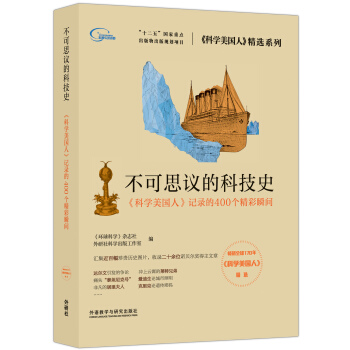

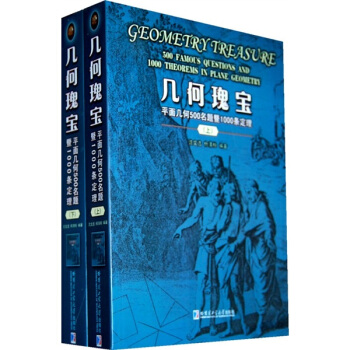

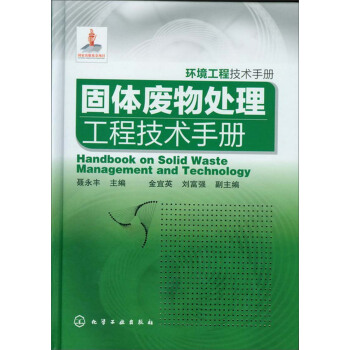
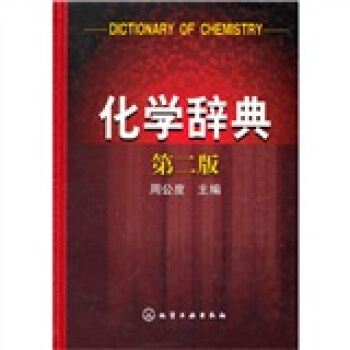

![工开万物:17世纪中国的知识与技术 [The Crafting of the 10000 things] pdf epub mobi 电子书 下载](https://pic.tinynews.org/11821415/565bb4b1N97e4734d.jpg)
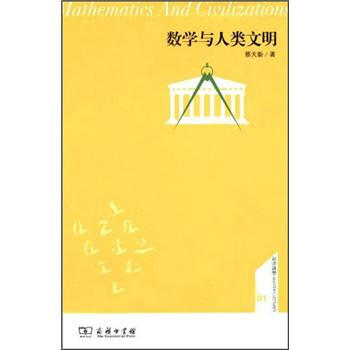
![凝聚态物理学(上卷) [Condensed Matter Physics (Voume 1)] pdf epub mobi 电子书 下载](https://pic.tinynews.org/11349879/564150dfNdeeb618b.jpg)
